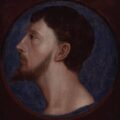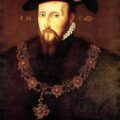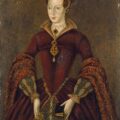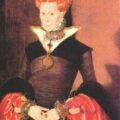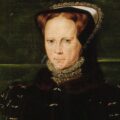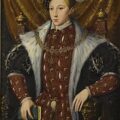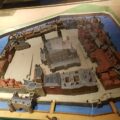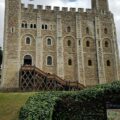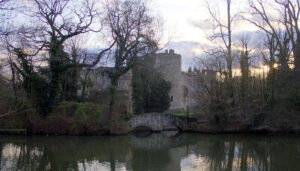
On 22nd January 1554, Thomas Wyatt the Younger met with fellow conspirators at his home of Allington Castle in Kent to make final plans for their uprising against Mary I and her decision to marry Philip of Spain.
As Ian W Archer explains in his article about Thomas Wyatt, “The anomalous position of a king regnant crystallized fears about how Philip might use his powers within England; the possibility that England might become another Habsburg milch cow was very real; and there was a real risk of a succession struggle on Mary’s death” and even members of Mary I’s privy council were concerned about the Spanish match and were putting forward Edward Courtenay, Earl of Devon, as a match.
In November 1553, Parliament tried to dissuade Mary from her marriage plans but she had made up her mind and some men decided that a military coup might be the only way to prevent Mary’s marriage. On the 26th November 1553, a group of men including Wyatt, Sir Peter Carew, Sir Edward Rogers, Sir Edward Warner, Sir William Pickering, Sir Nicholas Throckmorton, Sir James Croft, Sir George Harper, Nicholas Arnold, William Thomas, and William Winter, met in London. Archer writes of how the leader at this point was probably Croft and not Wyatt.
In December, the rebel group was joined by Henry Grey, Duke of Suffolk and father of Lady Jane Grey, and plans were put into action: “a fourfold rising scheduled for Palm Sunday (18 March): Carew would raise the west country, Croft Herefordshire, Suffolk the midlands, and Wyatt Kent”, but there were disagreements over the fine details, with William Thomas promoting the idea that Mary should be assassinated, something which Wyatt did not agree with. The plan was to depose Mary I and replace her with her half-sister Elizabeth who would marry Courtenay.
Unfortunately, by the end of December 1553 the privy council heard that trouble was brewing and Edward Courtenay spilled the beans to Stephen Gardiner, Bishop of Winchester, on the 21st January. The rebels were forced into action earlier than planned and while Carew spread dissent in Devon, Wyatt called a meeting at Allington on the 22nd January 1554 to organise the Kent uprising. Three days later, on the 25th January, Wyatt “raised his standard in Maidstone and his supporters made simultaneous proclamations in Rochester, Tonbridge, Malling, and Milton”. On the 28th January, Mary I’s government sent 600 men from London to Kent under the leadership of Thomas Howard, 3rd Duke of Norfolk, but they were far outnumbered by Wyatt’s forces and many men mutinied, joining the rebels. On the 30th January, Wyatt and his men besieged Cooling Castle, owned by George Brooke, 9th Baron Cobham, who had withdrawn to his castle after the Duke of Nrofolk’s forces had mutinied and dispersed. According to C S Knighton’s article on Cobham, he claimed that he had fought valiantly against the rebesl for seven hours before surrendering to them but Knighton points out that his resistance was actually a “pretence” and he joined the rebels. Things were looking good for Wyatt who then marched on to London.
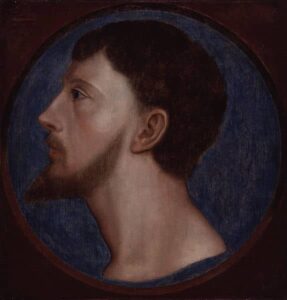
By the time Wyatt had reached London on 3rd February 1554, Mary I had rallied her troops with a rousing speech given at Guildhall on the 1st February and Wyatt found the City guarded and barricaded. Wyatt changed his plan, moving from Southwark to Kingston, and was successful in entering Kingston on the 6th February. There, he encountered problems: the bridge over the Thames needed repairing before it could be crossed and his siege artillery became bogged down and had to be abandoned. Archer writes of how “Some observers doubted the loyalty of the queen’s commanders, as they apparently let Wyatt advance unmolested” but Wyatt was left alone because he was actually being “lured into a trap”. By the time Wyatt and his troops reached Ludgate, Mary’s force had barred the gates and the rebels were forced into turning around and heading to Temple Bar where Mary’s troops were waiting for them. With his men surrendering and swearing allegiance to the Queen, Wyatt was forced to surrender and he was arrested by Sir Maurice Berkeley and taken to the Tower of London.
Thomas Wyatt the Younger was tried at Westminster Hall on the 15th March. He denied plotting the assassination of Mary I and refused to implicate Elizabeth. He was found guilty of treason and was executed on the 11th April 1554. He was beheaded and then his body was quartered and his bowels and genitals burned. His head and the quarters of his body were then taken to Newgate where they were parboiled, nailed up and the head placed on a gibbet at St James’s. It is not known what happened to his head, as it disappeared from the gibbet.
Elizabeth was taken to the Tower on the 18th March – see The Imprisonment of Elizabeth – and imprisoned while Mary’s council tried to implicate her in the rebellion. She was released in May 1554 but Lady Jane Grey, whose father had been involved in the rebellion, was not so lucky: she and her husband, Guildford Dudley, were executed on the 12th February 1554. Henry Grey, Duke of Suffolk, was executed on the 23rd February 1554.
Notes and Sources
- Ian W. Archer, ‘Wyatt, Sir Thomas (b. in or before 1521, d. 1554)’, Oxford Dictionary of National Biography, Oxford University Press, 2004
- C. S. Knighton, ‘Brooke, George, ninth Baron Cobham (c.1497–1558)’, Oxford Dictionary of National Biography, Oxford University Press, 2004
